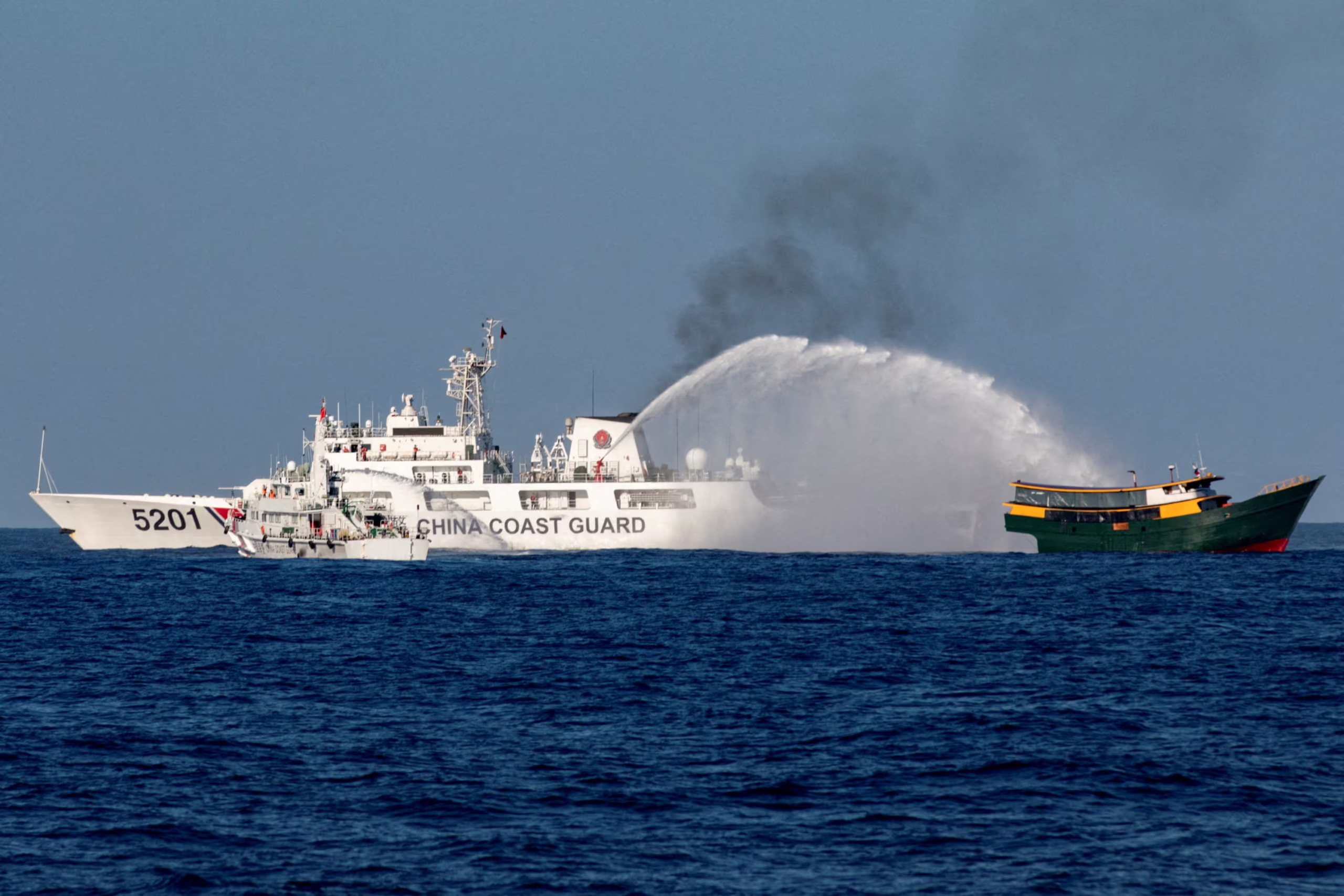15 October 2025, NIICE Commentary 11840
Dr Chander Shekhar
Recent days have seen the escalation between the Philippines and the PRC vessels, accusing each other of violating their sovereign territory. This incident occurred on 10 October 2025, around the Philippine-occupied Thitu Island (an island of hope) in the South China Sea. After being seized by the Philippines in the 1970s from Taiwan, the Republic of China (ROC), now it is part of the administration of Palawan Province. Since then, this island has been developed in logistics and infrastructure, etc. The same feature is claimed by China and Vietnam as well. Therefore, this makes it like other multilateral disputes. It needs to be coped up and de-escalated by going back to the joint commitment made in the Declaration on the Conduct of Parties in the South China Sea after the Cold War, regional countries should stay alert on how they could push parties engaged in for peaceful discussion and avoid mis-understanding and hatred, which is common in the age of social media and digital revolution playing with public perceptions across the region.
Politics of Popular Mutual Misconduct
South China Sea has become a serious issue. It is not because of the name itself, but the continuous ramping from parties that claim stakes in the features of the South China Sea. This is occurring only between two dominant claimants, not with others, provided that there are close external defense and security ties. It is the territorial and maritime rights issue that covers major Southeast Asian countries and the People’s Republic of China. Recent developments from claimants demonstrate in the growth of daring to openly clash and criticize others by duly attached proofs of vehicular wrestling and violating each other’s sovereign territory.
It is reported that the Philippines, in line with its past claims, has accused PRC of “ramming a government vessel and causing damage near the Thitu Island, a part of the geopolitically important Spratly Islands chain where several other entities have put forward their claims as well. The Thitu Island is known as Zhongye Island in China. This allegation is rejected by mainland China, which asserts that it is the Philippine vessel that “dangerously approached” the Chinese ship. China says the collision happened because of Manila as “their ship ignored repeated stern warnings from the Chinese side”; however, Manila warned that “despite these bullying tactics and aggressive actions…we will not be intimidated or driven away”. This shows both sides are affirmed in their positions that “offered conflicting accounts, traded accusations of misconduct”, or play politics of a malign game. Often issues overlapped and Taiwan comes to play to distract the core issue, but on 29 August 2025, Manila’s foreign ministry reaffirms its commitment to the One China principle by issuing an official position that the Philippines' policy is “clear and unwavering” to “uphold One China policy”, the foundation of which is the 1975 Joint Communique.
In the twist, the Filipino vessel enters into Sandy Cay, a coral reef in the South China Sea’s Spratly chains of features, which is claimed by several sovereign states, such as Vietnam, China, and the Philippines. Chinese sources report that the Philippine vessels with numbers 3002 and 3003 entered China’s territory without prior permission, thereby expelling them, which undermined the Declaration on the Conduct of Parties in the South China Sea and peace and stability in the region. The Permanent Court of Arbitration verdict in the South China Sea could not change the status quo since its judgment, which became just a footnote without effect as well as asset.
US’s Intervention
The US Department of State issued an official statement on 13 October 2025, wherein it condemns the development unfolding in and around the Thitu Island in the South China Sea. It says “the United States condemns China’s October 12 ramming and water cannoning of a Philippine Bureau of Fisheries and Aquatic Resources vessel close to Thitu Island in the sea”. Washington is not a party to the South China Sea conflict, but holds significance, given its interests in the freedom of navigation for international trade and commerce.
America has demonstrated solidarity at the onset in favor of Manila from the 2016 PCA judgment to other incidents. The US believes that Chinese actions, such as its claims and maritime rights in the South China Sea, have advanced at the expense of regional stability and “fly in the face of its prior commitments to resolve disputes peacefully”.
The US re-asserts in its press statement that it stands with its allies as Manila engages with the PRC in a maritime dispute, and of course reaffirms the joint commitment enshrined in Article IV of the 1951 Mutual Defence Treaty that is extended “to armed attacks on Philippine armed forces, public vessels, or aircraft—including its coast guard in the South China Sea.”
Conclusion
The South China Sea has against renewed attention from the global community and bifurcated the scholarly community into proponents and against the motion. The continuous politics of misconduct in the South China Sea, backed up by outside actors, has defined the current geopolitics of this sub-ocean, on which trillions of dollars of trade depend, which is to be avoided, and has opportunities to practice the DOC principles and norms in the wake of direct and indirect wars happening in different sub-continents in the world. Proxy wars in Southeast Asian countries, such as Vietnam, have taught lessons to avoid the same mistakes.
The ASEAN needs to step in and issue a statement by asking parties not to do such activities, which delay the legally binding code in the South China Sea, which seems, as of now not possible. Southeast Asian countries should have a consensus on the draft. That, without a binding document, the behaviors of claimant parties cannot be stopped, which would multiply mishappenings and distrust.
Dr Chander Shekhar is a Researcher at the Center for International Politics, Organizations and Disarmament, Jawaharlal Nehru University, New Delhi, India.

